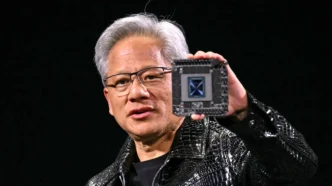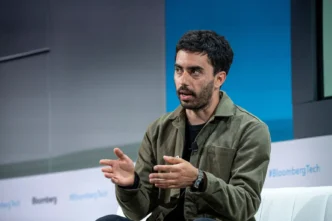Nvidia may be riding the AI wave, but a growing number of voices suggest that its dominance might not last forever. Despite impressive showcases and rapid innovation, some experts warn that the company could be heading into dangerous territory—much like IBM once did.
Although Nvidia’s stock enjoyed a brief surge following the 2025 Nvidia GTC (Global Technology Conference), it has yet to recover fully from broader market pressures. Rising economic uncertainty, new Chinese export curbs, and intensifying competition have all chipped away at investor confidence.
Rising Challenges in the AI Chip Market
The tech giant remains at the forefront of AI chip innovation, yet it’s battling a series of new headwinds. Recent regulatory moves from China have sparked concern that Nvidia could lose traction in one of the world’s fastest-growing AI markets.
Even after unveiling several cutting-edge products at its annual GTC event, Nvidia’s stock remains down for the month. Meanwhile, chatter about a looming bear market—fueled by inflation, trade tariffs, and global instability—continues to weigh on Wall Street sentiment.
Still, investor optimism hasn’t vanished. Many analysts continue to place bullish bets on Nvidia, confident in its pivotal role in powering the AI revolution. However, one influential tech leader thinks the company’s success could soon become its biggest weakness.
Industry Insider Warns Nvidia May Be Headed for a Fall
Tory Green, CEO of decentralized GPU aggregator io.net, believes Nvidia may be heading toward a fate similar to that of IBM—once a titan of tech, now seen as a cautionary tale.
Speaking to TheStreet, Green didn’t mince words. While Nvidia dazzled with flashy announcements at GTC, he argues that the company’s future remains fragile.
“Its $30,000 GPUs are not the future of AI—they’re a luxury for a limited slice of workloads. If decentralization continues to gain ground, Nvidia risks becoming the IBM of this cycle—dominant at first, but eventually outpaced by more agile architectures.”
Why the IBM Analogy Is a Red Flag
On the surface, comparing Nvidia to IBM may seem like a compliment—after all, IBM stock has been performing well lately. But Green sees it differently. He’s not criticizing IBM’s performance today—he’s warning against the kind of market inertia that can cause even industry leaders to fall behind.
IBM once led the computing world, only to be overtaken by more adaptable rivals like Apple and Microsoft. Green fears Nvidia could suffer the same fate if it stays too attached to centralized AI infrastructure and fails to adapt to new models of computing.
“Nvidia is tightly bound to a model centered on large data centers and long-term contracts. But the AI ecosystem is evolving rapidly toward more distributed, permissionless infrastructure. The future may not favor those who rely solely on top-down control.”
Cheaper, Smarter AI Solutions Are Gaining Momentum
Green’s biggest concern is Nvidia’s reliance on expensive, high-end GPUs—especially as lighter, cheaper alternatives gain traction.
He pointed to a growing inefficiency in the current AI landscape: overusing premium chips like the H100 for basic inference tasks that don’t require such power.
“Most AI jobs don’t need a $30,000 GPU,” Green emphasized. “They can run on cheaper, more available hardware. And that’s where the real opportunity lies—for companies that can scale AI affordably.”
This isn’t just theoretical. In early 2025, Chinese AI startup DeepSeek shocked the industry with its R1 model, proving that powerful AI systems can be built without Nvidia’s most expensive chips. That launch sent Nvidia stock tumbling—and it hasn’t fully recovered.
Nvidia Must Adapt or Risk Losing Its Edge
Green’s message is clear: the AI boom won’t last forever if it’s propped up by bloated infrastructure and overpriced hardware. If Nvidia doesn’t pivot to support more flexible and cost-efficient solutions, it may find itself left behind by smaller, nimbler players.
The risk, Green notes, isn’t about product performance—it’s about strategic positioning.
“If we want scalable, affordable AI, we can’t keep running it on these massively expensive chips,” he said. “We need to unlock IO computability and rethink how AI infrastructure is built from the ground up.”
As decentralization reshapes the future of computing, the pressure is on Nvidia to evolve. Whether it becomes the next IBM—or learns from history—remains to be seen.













